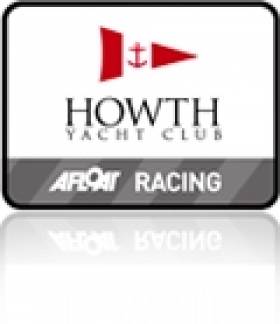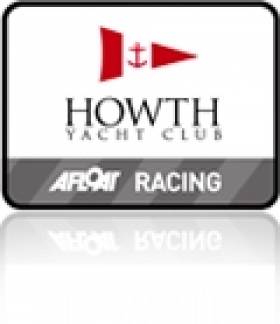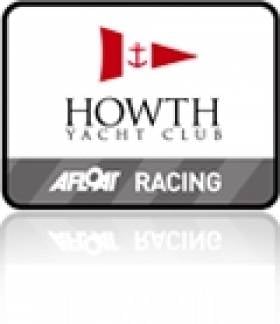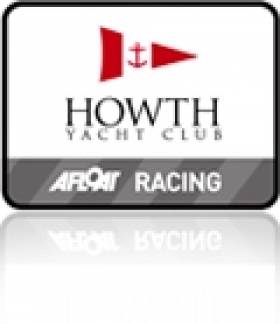Displaying items by tag: Howth Yacht Club
Storm takes Class 1 win in Howth Yacht Club's Wednesday Series
Howth Yacht Club. Wednesday Series 3 (RACE) 18/08/2010
Class 1 IRC: 1, Storm P Kelly; 2, Makutu Doyle/Others; 3, Trinculo M Fleming; Class 1 HPH: 1, Trinculo M Fleming; 2, Storm P Kelly; 3, Makutu Doyle/Others;
Class 2 IRC: 1, Dux A Gore-Grimes; 2, Superhero Burne/Banahan; 3, Toughnut D Skehan;
Class 2 HPH: 1, Jokers Wild G Knaggs; 2, Toughnut D Skehan; 3, Dux A Gore-Grimes;
Class 3 IRC: 1, Alliance V Gaffney; 2, Starlet Bourke/Others; 3, Helly Hunter L McMurtry;
Class 3 HPH: 1, Helly Hunter L McMurtry; 2, Rossinver C Scott; 3, Starlet Bourke/Others;
White Sails HPH: 1, Sandpiper of Howth A Knowles; 2, Brazen Hussey Barry/Stirling; 3, Alphida H Byrne;
White Sails IRC: 1, Alphida H Byrne; 2, Bite the Bullet C Bermingham; 3, Sandpiper of Howth A Knowles
Sheila Wins Howth 17 Race
Roxanne Gets Green Light in Howth Tuesday Series
HOWTH YACHT CLUB. TUE + SAT SERIES 3 (RACE) 10/08/2010 17 Footer SCRATCH: 1, Leila R Cooper; 2, Rita Lynch/Curley; 3, Aura I Malcolm; 17 Footer HCAP: 1, Leila R Cooper; 2, Rita Lynch/Curley; 3, Aura I Malcolm TUESDAY SERIES 3 (RACE) 10/08/2010 Puppeteer SCRATCH: 1, Harlequin Clarke/Egan; 2, Ibis G May; 3, Mojo Stanley/Callen; Puppeteer HPH: 1, Mr. Punch NiBhraonain/Wilson; 2, Cloud 9 C Feeley; 3, Nefertari Morgan/Murray; Squib SCRATCH: 1, Roxanne J Flynn; 2, Pegasus K T & K Smyth; 3, Astrix M McGaughey; Squib HPH: 1, Pegasus K T & K Smyth; 2, Shadowfax P Merry; 3, Roxanne J Flynn; Etchells SCRATCH: 1, Fetching Quinn/O'Flaherty; 2, Northside Dragon J Bourke; 3, Kootamundra Wattle O'Grady/Reilly; SB3 SCRATCH: 1, Investwise D Quinn; 2, Lia D Barry; 3, Sharkbait Duncan/Moran
Howth Yacht Club's Lambay Race on Target for Big Entry
“Our entries to date have broken the 50 mark,” he said “which is ahead of the numbers at the corresponding time in previous years. Past experience tells us that there will be a surge in entries in the days leading up to the event.”
The Lambay Race, sponsored this year by Electro Automation Group, will provide racing for 12 sailing classes, with the 31.7s back with a separate class start and the J109s also racing for a scratch result within Class 1.
An Offshore Committee Boat will start the races for Classes 1, 2, 3, First 31.7 and two White Sail Cruiser divisions. On the inshore course, one-design classes include Etchells, Puppeteers, Ruffian 23s, E-Boats, Squibs and Howth 17 Footers.
The ‘Lambay Lady Trophy’ will be awarded to the class winner with the largest time differential over the runner-up.
Entries can be made on-line on www.hyc.ie
Howth Harbour
Howth Harbour
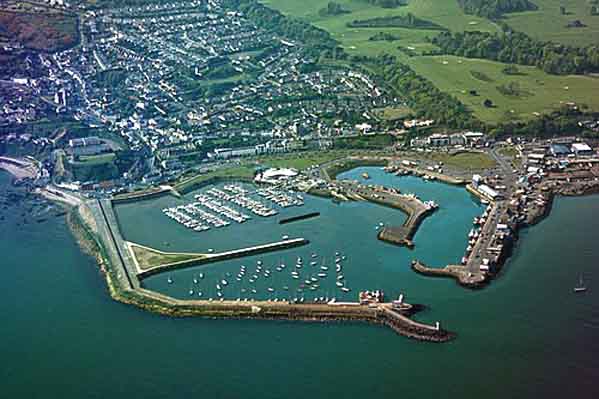
A picturesque fishing village nestled on the rugged peninsula that forms the north side of Dublin Bay, Howth is one of Ireland’s many hidden treasures. That is not to say that the village doesn’t receive its fair share of visitors. Far from it. Howth is a favourite holiday destination and benefits especially from its popularity amongst yachtsmen and pleasure boaters. Indeed Howth Yacht Club dates back to 1895 and with around 2,000 members it is by far the largest in the country and enjoys a busy programme of racing, regattas and voyaging. The marina and club complex combine state of the art with old and traditional with standards of services superb across the board. As you would expect from such a large club, berths are plentiful and marine services top notch.
Away from the harbour itself there is much to recommend Howth. Historians will love the ruined abbey, nearby Baily Lighthouse and 15th century castle. You can take a bracing stroll along the piers, sight-see aboard an open top tram, watch seals and dolphins in the waters along the shore and take in breathtaking views from cliff top walks. Of course, Howth’s working fishing port means that fish and seafood lovers are absolutely spoilt when it comes to dining out and the pub scene is second only to Dublin itself, if a little more relaxing.
Howth is a lovely place from which to discover Ireland. You can blow away the cobwebs and kick back and explore the magnificent coastline at your leisure knowing you will be returning after each trip to one of the friendliest places on earth. And that’s the truth.
Marine Services in Howth – click here
Pilot Notes for Howth – click here
Marinas in Howth – click here
Accommodation in Howth – click here
Emergency
Fire/Ambulance/Police: 999/112
Customs: 874 6571
Harbour Master: 83 222 52
Lifeboat: 8323 524
Beaumont Hospital: 83 777 55
Tourist Information – Fingal Tourist Information Office +353 1839 6955
Air Travel
Aer Lingus: 705 3333
British Midland: 283 8833
RyanAir Flight Information: 1550 200200
CityJet: 844 5566
Car Ferries
Stena Line: 204 7777
Irish Ferries: 66 10 511
Rail Transport – Iarnrod Eireann (Irish Rail): 83 66 222
Howth Harbour Harbour Master's Office – Captain Raja Maitra, tel +353 (0) 1 83 222 52 or mobile 086 3814926. fax +353 (0) 1 832 6948 (Office situated Northern End of Auction Hall)
Howth Yacht Club
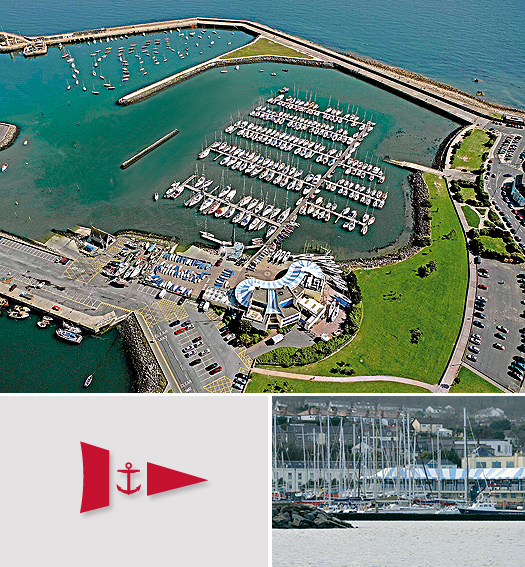
For all the latest Howth Yacht Club news click here. Founded in 1895 in the thriving fishing port of Howth in north county Dublin, Howth Yacht Club is one of the country's largest and most successful clubs, with a major expansion of the Clubhouse in 2001 adding greatly to the facilities.
Located in Howth Harbour, the club organises Cruiser, Keelboat and Dinghy racing for twelve months of the year. There is also an active cruising group. The club operates a 300 berth marina, 70 swinging moorings, a large dinghy park, and modern clubhouse with full facilities.
HYC offers Dinghy courses Up to Improving Skills, Advanced Boat Handling, Racing 1, and Adventure 1; and Powerboat courses 1, 2, and Safety Boat
Howth Yacht Club, Rupert Jeffares, Harbour Road, Howth, Co. Dublin. Tel: 01 832 2141, fax: 01 839 2430, email: [email protected]
Have we got your club details? Click here to get involved



























